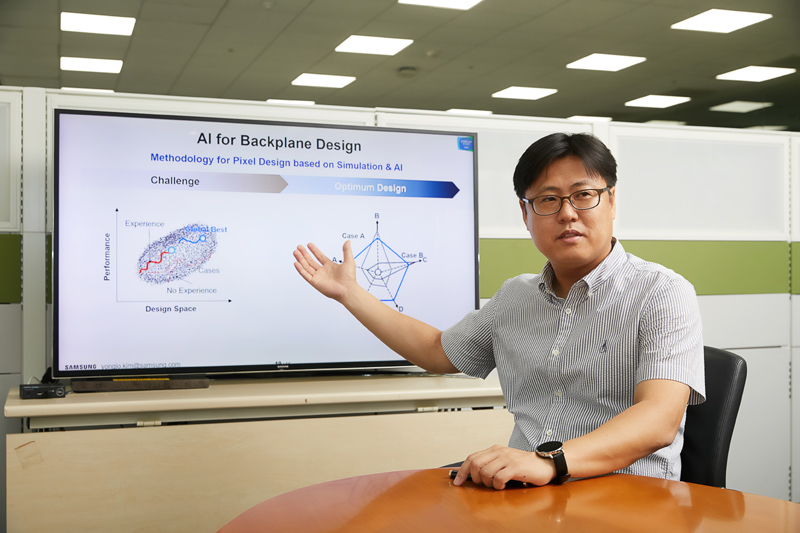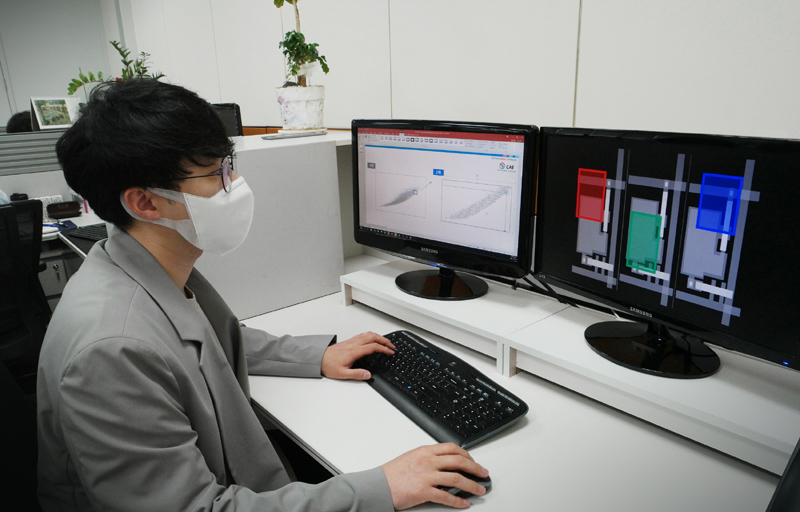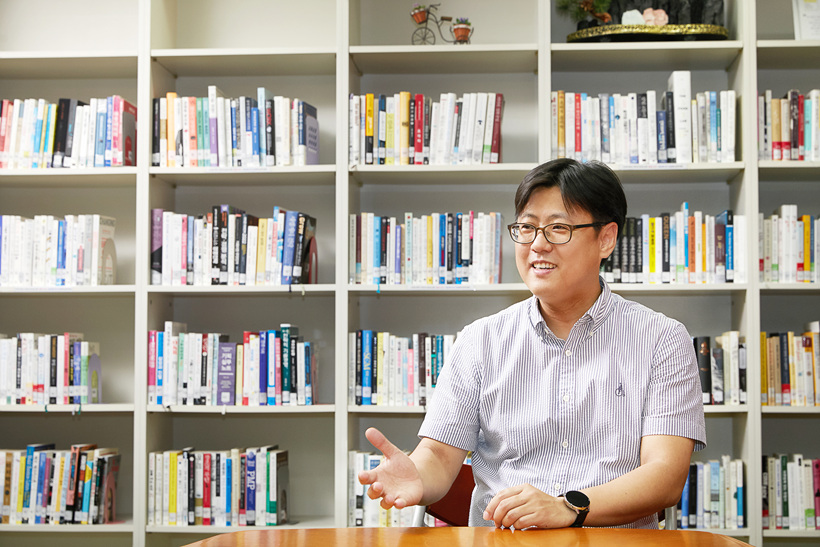
On May 19, ‘AI and Machine Learning for Display’ online session led by Samsung Display’s head of CAE team, Yong-jo Kim, took place at SID (Society for Information Display) Display Week 2021. Display panel research, design optimization and simulation using Artificial Intelligence in development, and implementation of AI in real life were some of the many topics discussed.
From AlphaGo playing against human players to AI Chatbots, application of Artificial Intelligence is prevalent in our lives today. Display industry is no exception: AI technology is being introduced in the designing of the panel structure and manufacturing process. During the interview, Director Yong-jo Kim expressed that AI would no longer be an option but an essential part of the development process within the display industry in which the technology is increasingly advanced.
Q1. When Did Samsung Display First Implement AI?
Kim: Artificial Intelligence has been integrated into the production site for quite some time now. One of the first implementations was within the manufacturing sector. In hopes of reducing defects and increasing yield of production, AI was used for inspection and facility diagnosis. Whereas manufacturing sectors utilized AI to accumulate data and process them, current research and development develop/apply its own AI engines and technologies that run a variety of simulations to achieve optimal results. Unexpected outcomes can occur due to AI’s ability to delve into data far more extensively than what humans are capable of. This result can be analogous to the unpredictable yet victorious win of AlphaGo during its match with Sedol Lee in 2016.
As for Research and Development (R&D), the first case of AI implementation took place three years ago during the stages of foldable display development. At that time, simultaneous optimization of materials and thickness of multiple layers, including organic films and adhesive layers, was necessary in order to improve visibility by minimizing issues with curvature. However, research was restrictive due to the fact that there were not much past references related to folding displays and there were too many options to consider. In order to build an effective predictive model for foldable displays, AI seemed like the plausible next step, and that is when our first efforts took place.
Q2. How is AI Used in Display Research and Development?
Kim: AI replaces any experimental trials and errors experienced by engineers. There're different kinds in research and development, such as materials, panel structures, panel operation, and modules structure. In the case of organic materials, it was hard to know the results without running the experiments until now. For example, in the past, engineers designed the structure, experimented, and validated how much achieved the properties of materials by themselves. However, AI reversed the work dynamics completely.

Do you recall how in the movie ‘Avengers: Infinity War’, Doctor Strange lived through 14,000,605 futures in a flash and chose the best scenario? AI in display research and development utilized this kind of method. If you input desired characteristic values of materials in the system, AI will simulate an astronomical number of cases and find the optimal outcome.
Q3. Why Did Samsung Display Decide to Adopt AI?

Kim: Samsung Display adopted AI because the display development environment is becoming more complex. Previous versions of full HD resolution could be designed by human intuition. Repetition and modification used to be on a tolerable level for engineers to get the characteristics they wanted. However, now it takes too long to get the desired characteristics in current 4K or 8K resolution designs. Assuming a TV panel of the same size, the pixel area of 8K is only 1/16th of the pixel area of full HD. In other words, decrease in pixel areas - despite the fact that the elements needed for electronic circuits remain the same - raises the probability of malfunctions such as circuit interference. As ultra-high resolution products require a more intricate design process, more manpower and time are needed. Therefore, application of AI technology has become almost mandatory in today’s research and development in order to improve design efficiency.
Q4. How Much Time is Reduced When AI is Implemented in the Research and Development Process?
Kim: Let’s take molecular design: If it originally took 15 days for an engineer to design 100 molecular structures of organic materials and derive characteristic values, now it takes only 30 seconds using AI. That's an efficiency increase of approximately 43,000 times. The same phenomenon occurs in the field of panel circuit design: What AI can accomplish within a given period is unimaginable. If we previously struggled to get 100 design mappings validated, AI-powered by a 64-core CPU server produces more than 640,000 designs in a single day.

What used to be reliant purely on human workforce are now being processed more efficiently with the use of AI. By having artificial intelligence take over the process, we can drastically increase efficiency for engineers by allowing them to focus on strategic tasks rather than spending time searching for optimized routes.
Q5. What Other Areas of Display Development can AI be Applied?
Kim: If we were to look at the display development area into three parts (materials, panel design, and modules), modules were the first to have AI applied whereas materials are currently being utilized. We are currently planning to integrate AI into panel designs this year as well. Upgrading and expanding the scale of AI implementation is our given task. If we relied on AI to predict based on given data sets prepared by engineers, we hope to have Artificial Intelligence develop systems that can ideate concepts on its own without supervision. In addition, if we applied AI to individual units such as materials, components, circuits, and pixels, our future plan is to connect and develop an overarching design that encompasses different units - resulting in a more advanced AI system.

Kim: We are just getting started with AI. Display development is the result of technological integration that deals with various technologies such as organic materials, panels, and modules. Therefore, there are many problems to be solved, which can be interpreted as having vast opportunities for AI solutions. Display is one of the leading industrial sectors in Korea, so it needs constant attention and active participation from academia and related industries. It is our genuine hope to build a strong foundation for an AI-driven display R&D environment through close industry-academic cooperation.
#SamsungDisplayGlobal #Display #OLED #AI #SID #AlphaGo #Machine Learning #ML #Chatbot #Samsung #SamsungDisplay

